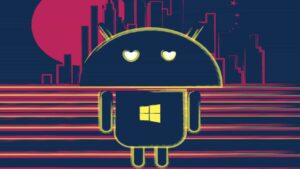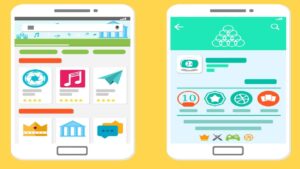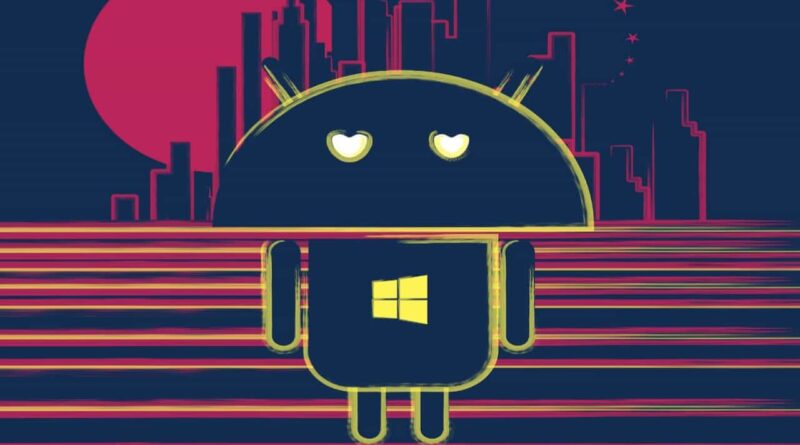Android App Development: 10 Special Unknown Facts About Android App Development Rules
Android App Development: 10 Special Unknown Facts About Android App Development Rules
Android App Development Rules
Rules for creating Android apps
There are a few rules that you should follow when creating Android apps:
Android App Development: Follow Google’s Android design guidelines:
Android App Development: These guidelines provide important information on how to design and build Android apps that are visually appealing, easy to use and work well on a wide range of devices.
Build your first Android app
Android App Development:Test your app on a variety of devices:
Android devices come in all shapes and sizes, and it’s important to test your app on as many devices as possible to ensure that it works correctly on all of them.
Follow the Android development best practices:
These best practices guide how to design and build high-quality Android apps that are efficient, performant, and maintainable.
Use the Android API responsibly:
The Android API provides a wide range of functionality that you can use in your app, but it’s important to use it responsibly and in a way that does not drain the device’s battery or use up too much of the device’s resources.

Respect the user’s privacy: It’s important to respect the user’s privacy when creating Android apps. This means being transparent about the data that you collect, and only collecting data that is necessary for the app to function properly.
Android App Development: Few more things to consider when creating Android apps:
Make sure your app is performant: Users expect Android apps to be responsive and smooth, so it’s important to optimize your app’s performance. This includes minimizing the use of processor-intensive tasks, reducing the amount of data that needs to be transferred, and using efficient algorithms.
Use Android’s security features: Android provides several security features that you can use to help protect your app and the user’s data. These include permissions, encryption, and the Android Application Sandbox, which helps to isolate apps from one another.
Localize your app: If you want to reach a global audience, it’s important to translate your app into different languages and tailor it to different cultures. Android provides tools to help you localize your app and make it available in different markets around the world.
Keep your app up to date: As new versions of Android are released, it’s important to keep your app up to date and take advantage of the latest features and APIs. This helps to ensure that your app continues to work well on the latest devices and versions of Android.

Follow the Google Play Developer Program Policies: If you plan to distribute your app through the Google Play Store, it’s important to follow the Google Play Developer Program Policies.
These policies outline the guidelines for creating and distributing Android apps on the Play Store and include rules on things like content and user privacy.
Rules for creating Android apps without coding
It is possible to create Android apps without writing any code using a variety of drag-and-drop app development tools. Some popular options include:
Appy Pie: This platform allows you to create apps for Android, iOS, and Windows without writing any code. You can use pre-designed templates and drag-and-drop elements to create your app, and then publish it to the app stores.
Thunkable: This platform allows you to create mobile apps using a visual programming language, so you can build apps without writing any code. Thunkable supports Android and iOS and includes a range of features and integrations to help you build and publish your app.
BuildFire: This platform allows you to create custom mobile apps for Android and iOS without writing any code. You can use pre-designed templates and drag-and-drop elements to create your app, and then publish it to the app stores.
GoodBarber: This platform allows you to create custom mobile apps for Android and iOS without writing any code. You can use pre-designed templates and drag-and-drop elements to create your app, and then publish it to the app stores.
Keep in mind that while these tools can make it easier to create an app without writing code, they may have limitations in terms of the functionality and customization that you can achieve compared to building an app from scratch using code.
Android App Development Options
which is best for android app development
There is no one “best” option for Android app development as the choice of development tool often depends on various factors such as personal preference, project requirements, and the development team’s expertise.
However, some of the most commonly used tools for Android app development include:
Android Studio: The official IDE for Android app development, developed by Google and equipped with a powerful set of tools and features.
Kotlin: A modern programming language that is concise, expressive, and fully interoperable with Java.
React Native: A JavaScript framework for building mobile apps that run natively on both Android and iOS.

Xamarin: A popular cross-platform development tool that allows developers to create apps for Android, iOS, and Windows using C#.
Ultimately, the best option for you will depend on your specific needs and development experience.
Flutter: An open-source UI software development kit developed by Google that allows developers to build high-performance, high-fidelity, and expressive apps for mobile, web, and desktop from a single codebase.
Unity: A popular game engine that also supports the creation of non-gaming apps and is used by a large community of developers.
Cordova/PhoneGap: An open-source mobile app development framework that allows developers to create apps for multiple platforms using HTML, CSS, and JavaScript.
It’s important to note that each of these tools has its strengths and weaknesses and the best choice for your project will depend on your specific requirements and development experience.
Android App Dev Example
android app development example
Here’s a simple example of an Android app development:
Open Android Studio
Enter the name and package name for the app, then click “Finish”
In the MainActivity.java file, add the following code to display a “Hello World” message:
java
Copy code
import android. os.Bundle;
import android. widget.TextView;
import android.appcompat.app.AppCompatActivity;
public class MainActivity extends AppCompatActivity {
@Override
protected void onCreate(Bundle saved instance state) {
super.onCreate(savedInstanceState);
setContentView(R.layout.activity_main);
TextView textView = findViewById(R.id.text_view);
textView.setText(“Hello World”);
}
}
In the activity_main.xml file, add the following code to create a TextView to display the message:
Python
Copy code
<TextView
android:id=”@+id/text_view”
android:layout_width=”wrap_content”
android:layout_height=”wrap_content”
android:textSize=”30sp”
android:text=”Hello World” />
Run the app on an emulator or physical device by clicking the “Run” button in Android Studio.
This is just a simple example to demonstrate the basics of Android app development. You can build upon this to create more complex apps with various features and functionalities.
Here are a few more steps to add functionality to the app:
Add a button to the activity_main.xml file:
Python
Copy code
<Button
android:id=”@+id/button”
android:layout_width=”wrap_content”
android:layout_height=”wrap_content”
android:text=”Click Me” />
In the MainActivity.java file, add an OnClickListener for the button to change the text of the TextView:
java
Copy code
import android. view.View;
import android. widget.Button;
…
public class MainActivity extends AppCompatActivity {
…
@Override
protected void onCreate(Bundle saved instance state) {
…
Button = findViewById(R.id.button);
button.setOnClickListener(new View.OnClickListener() {
@Override
public void onClick(View view) {
textView.setText(“Button was clicked”);
}
});
}
}
Run the app again and test the button by clicking it. You should see the text of the TextView change to “Button was clicked.”
This is just a basic example of adding button functionality to an Android app. You can use these concepts to create more complex apps with various buttons and actions.
Android App Language: Java.
android app code language
The primary language used for developing Android apps is Java, however, other programming languages such as Kotlin, C++, and Python can also be used.
Additionally, Android Studio, the official Integrated Development Environment (IDE) for Android app development, provides support for both Java and Kotlin programming languages.
Java is the most commonly used language for Android app development due to its rich collection of libraries and its long history of usage for building applications on the Java platform.
Kotlin, on the other hand, is a more modern and concise language that is fully interoperable with Java and has gained popularity as an alternative language for Android development. C++ can also be used for developing native Android apps, but this is more commonly used for performance-critical components such as games.
Python is a high-level programming language that can be used to build Android apps through a variety of tools and frameworks. Ultimately, the choice of language for Android app development will depend on the requirements of the app and the developer’s experience and preference.
No programming language is prohibited from being used for Android app development. However, some programming languages, such as Ruby and Swift, are not as commonly used for developing Android apps compared to Java, Kotlin, C++, or Python.
That being said, it is possible to build Android apps with these languages through the use of cross-platform development tools or by using a different approach such as using a WebView to run a web app inside a native app container.
Ultimately, the choice of language for Android app development will depend on the requirements of the app and the developer’s experience and preference.
It’s worth mentioning that while any programming language can technically be used to develop Android apps, some are better suited than others.
Java and Kotlin are officially supported by Google and have a large community of developers, making them the most popular choice for Android app development.
C++ can also be used to develop high-performance components of Android apps, such as games, and is well-suited for this use case due to its low-level nature and performance optimizations.
Python, while not as commonly used as Java or Kotlin, can still be a viable option for building simple Android apps, especially for those familiar with the language.
In contrast, languages like Ruby and Swift were not originally designed for mobile app development, and as such, may require additional effort and tooling to get up and running for Android development.
Furthermore, the support and community for these languages in the Android ecosystem may be limited, making it more difficult to find help or resources when needed.
Ultimately, the choice of programming language for Android app development will depend on various factors, including the complexity of the app, the experience and skills of the developer, and the available tools and libraries for the language in question.
Programming Language For Beginners
Android App Development: programming language for beginners
Many programming languages are suitable for beginners, some popular options are:
Python: Known for its simplicity and ease of use. It’s a great language for new programmers to start with as it has a lot of resources and a large community.
Scratch: A visual programming language designed specifically for kids and beginners to learn programming concepts and create animations and games.
JavaScript: A popular language that is widely used for web development and can be used to build dynamic and interactive websites.
Ruby: A simple and beginner-friendly language that is often used for web development and has a supportive community.
Regardless of the language you choose, the most important thing is to have patience, practice, and build things that interest you.




